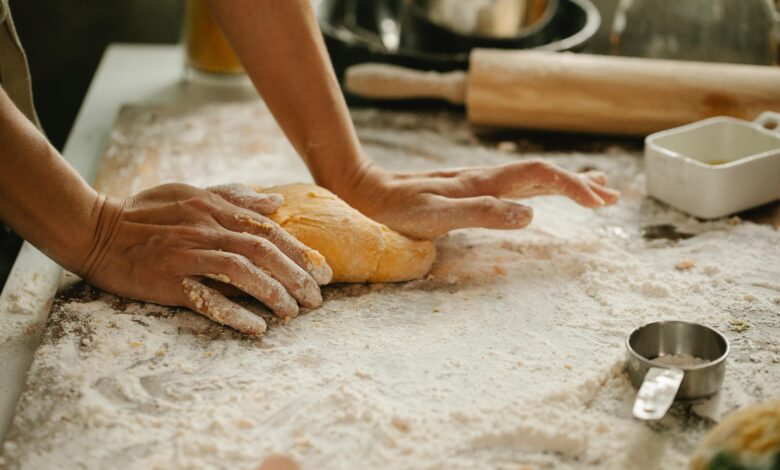ftmç: Elevating Home Cooking to Gourmet Excellence

Every home cook dreams of crafting meals that resonate with the sophistication and flavors of a high-end restaurant. What some consider alchemy – the transformation of simple ingredients into culinary gold – is within reach for those willing to understand the art and science of gourmet cooking. In this extensive guide, we’ll explore the secrets that professional chefs know and how you, as a home cooking enthusiast, can apply these principles to elevate your dishes to gourmet status.
Understanding the Ingredients of Excellence
The ingredients utilized in gourmet cooking form the foundation of any exceptional dish. They are the building blocks upon which flavors are layered, and each element plays a crucial role in achieving the desired taste, texture, and visual appeal.
High-Quality Sourcing
One of the first lessons in the gourmet kitchen is understanding that the quality of your ingredients directly impacts the caliber of your meals. Sourcing the freshest, highest-quality produce, meats, and fish can significantly enhance the final product. Look for local, organic options where possible, and get to know your suppliers. Familiarity with the source not only ensures the best ingredients but also builds a relationship rooted in the shared passion for great food.
Seasonality and Freshness
A true gourmet chef understands the ebb and flow of the seasons and embraces the availability of ingredients at their peak. Seasonal foods aren’t just fresher and more flavorful, they are also often more affordable. Familiarize yourself with the growing cycles of your favorite ingredients, as well as alternative flavors available in their absence.
The Power of Preparation
Professional kitchens adhere to the adage, “mise en place” – everything in its place. For home cooks, this translates to thorough preparation. Whether it’s washing and chopping vegetables, marinating meats, or toasting spices, the preparation should be precise and tailored to optimize your specific end goal.
The Craft of Gourmet Techniques
While understanding the quality of your ingredients is crucial, so too is the mastery of cooking techniques. Home cooks craving a glimpse into the world of gourmet cooking must familiarize themselves with these key methods:
Precision Cooking
Gourmet chefs are meticulous in their approach to heat. Understanding the impact of precise temperatures on ingredients is pivotal. Whether it’s the sear on a steak, the caramelization of onions, or the poaching of eggs, temperature control ensures perfection.
The Versatility of Flavor Combination
The layering of complex flavors is what sets gourmet dishes apart. Learning to balance sweet, sour, salty, bitter, and umami enhances the gastronomic experience. Utilize a bouquet of herbs, spices, and cooking methods to build nuance and depth in your flavors.
Textural Harmony
Gourmet cooking isn’t just about taste; it’s also about texture. The juxtaposition of crunchy with creamy or soft with firm engages not only the palate but also the senses, elevating the appreciation of a well-crafted dish to a multisensory experience.
The Aesthetics of Plating
The visual appeal of a gourmet meal is almost as important as its taste. Presentation can be as simple as stated above or as complex as creating abstract art on a plate. Learning to plate with elegance enhances the dining experience, turning a meal into a feast for the eyes as well.
Combining Science with Taste
Culinary alchemy is equal parts art and science. Understanding the science of cooking can lead to breakthroughs in taste and texture. Key scientific principles include:
Maillard Reactions
One of the most fundamental chemical processes in cooking is the Maillard reaction. This reaction – the browning of proteins and sugars – is responsible for creating those complex, savory flavors in seared meats or roasted vegetables.
The Role of Acids
Acids add brightness and contrast to dishes. Whether it’s a squeeze of lemon, a splash of vinegar, or a fermented product like sourdough, acids can elevate even the simplest dishes.
Heat Transfer and Conductivity
Different cooking surfaces and techniques impact the rate at which heat is transferred. Understanding these factors can help to control the cooking pace and ensure the perfect outcome, especially for delicate ingredients.
Case Studies in Culinary Transcendence
To truly understand the potential of gourmet home cooking, we will examine a few case studies of renowned dishes that any home cook can aspire to recreate:
The Perfect Risotto
Risotto is a dish that demands patience and precision. From the use of high-quality Arborio rice to the slow incorporation of stock, the result is a creamy, al dente masterpiece. The key is achieving the perfect balance of liquid absorption and retention, creating a dish that is neither too soupy nor too dry.
Slow-Roasted Beef Tenderloin
Slow-roasting a beef tenderloin at a low temperature (200°F, for example) delivers a tender, succulent roast with an even color throughout. By finishing with a high-heat sear, you can also achieve a flavorful crust while retaining the moisture.
Handmade Pasta
While store-bought pasta is convenient, handmade pasta offers a completely different textural experience. The freshness and delicacy of homemade pasta – combined with the traditional techniques of rolling and cutting – create a luxurious foundation for any sauce.
Practical Tips for Gourmet Home Cooks
Achieving gourmet excellence in your home kitchen is a continual learning process. Here are some practical tips to set you on the path:
Start with Simple Techniques
Begin by mastering one or two techniques at a time. Whether it’s poaching the perfect egg or achieving a smooth velouté sauce, focus on quality over quantity.
Invest in Quality Tools
While a gourmet meal can be prepared with basic equipment, having a good set of knives, high-quality pans, and even a sous vide machine can make the process more enjoyable and the results more consistent.
Build Your Flavor Library
Experiment with different herbs and spices. Grow a small herb garden to access fresh flavors at your fingertips. Keep a well-stocked pantry with a variety of spices, oils, and vinegars.
The Gourmet Journey Ahead
The path to culinary mastery is a lifelong pursuit. Dedication to learning and a willingness to experiment are essential. Each dish is an opportunity to explore new techniques and ingredients, and each meal is a chance to delight the senses.
Remember, gourmet cooking is not about exclusivity or elitism. It’s about passion, precision, and the pursuit of taste. By bringing the rituals of the professional kitchen into your home, you can transform everyday meals into extraordinary experiences.
Conclusion
Mastering the art of culinary alchemy is more than a personal achievement; it bridges cultures, celebrates traditions, and unites people through the universal language of food. By implementing the insights and strategies shared in this guide, you can begin your transformation from home cook to gourmet chef. Remember, each meal is a canvas, and the kitchen is your studio. Take risks, explore, and most importantly, enjoy the delicious rewards of your culinary creativity.
The digital forum awaits your thoughts and questions. Share your gourmet cooking experiences and connect with a community of like-minded food aficionados. Your culinary voice is unique and valued, so don’t hesitate to engage in the discussion, share your own tips, and continue your gourmet exploration.
Explore more content on our platform, from in-depth technique guides to curated recipes. Subscribe to stay updated on the latest trends and resources in the world of gourmet cooking. It’s an exciting culinary adventure, and we’re thrilled to have you on board!



